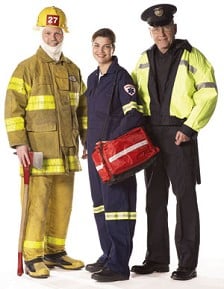Communication issues eliminated by new system

.floatimg-left-hort { float:left; } .floatimg-left-caption-hort { float:left; margin-bottom:10px; width:300px; margin-right:10px; clear:left;} .floatimg-left-vert { float:left; margin-top:10px; margin-right:15px; width:200px;} .floatimg-left-caption-vert { float:left; margin-right:10px; margin-bottom:10px; font-size: 12px; width:200px;} .floatimg-right-hort { float:right; margin-top:10px; margin-left:10px; margin-bottom:10px; width: 300px;} .floatimg-right-caption-hort { float:left; margin-right:10px; margin-bottom:10px; width: 300px; font-size: 12px; } .floatimg-right-vert { float:right; margin-top:10px; margin-left:10px; margin-bottom:10px; width: 200px;} .floatimg-right-caption-vert { float:left; margin-right:10px; margin-bottom:10px; width: 200px; font-size: 12px; } .floatimgright-sidebar { float:right; margin-top:10px; margin-left:10px; margin-bottom:10px; width: 200px; border-top-style: double; border-top-color: black; border-bottom-style: double; border-bottom-color: black;} .floatimgright-sidebar p { line-height: 115%; text-indent: 10px; } .floatimgright-sidebar h4 { font-variant:small-caps; } .pullquote { float:right; margin-top:10px; margin-left:10px; margin-bottom:10px; width: 150px; background: url(http://www.dmbusinessdaily.com/DAILY/editorial/extras/closequote.gif) no-repeat bottom right !important ; line-height: 150%; font-size: 125%; border-top: 1px solid; border-bottom: 1px solid;} .floatvidleft { float:left; margin-bottom:10px; width:325px; margin-right:10px; clear:left;} .floatvidright { float:right; margin-bottom:10px; width:325px; margin-right:10px; clear:left;}
When Polk County is hit by a major crisis such as a flood, large fire or blizzard, the emergency responders from different government agencies often can’t communicate by radio. Those agencies moved closer, however, to a day with better interdepartment communication when the Des Moines City Council approved on Jan. 25 a contract for construction of a Metro Interoperability Communications System.
The $4.16 million system, a collaborative effort between the Polk County Sheriff’s Office and the Des Moines Police Department, will facilitate mobile radio communication throughout Polk County and hopefully eliminate frustrating communication problems that can hamper responses during day-to-day operations and major events.
“When there is an event that by its nature winds up involving multiple agencies from different jurisdictions, they may not be able to talk to each other on the radio,” said John Jones, director of planning and budget for the Des Moines Police Department.
“Sometimes you share radios, sometimes cell phones work, sometimes you just holler at the person who is 20 feet away from you, but sometimes there is a radio issue.”
The problem stems from a compatibility issue between the systems that the different agencies use. There are three major bands, or sections of the radio frequency spectrum, that emergency responders’ radios operate on: Very High Frequency (VHF), Ultra High Frequency (UHF) and 800 MHz. If an agency is using VHF, for example, it can’t talk to an agency that uses UHF or 800 MHz, Jones said.
In Des Moines, the police and firefighters operate on UHF; Polk County has one type of 800 MHz system and in the western suburbs the Wescom Dispatch Center has a different type that isn’t compatible; and Iowa State Patrol and many fire departments use VHF.
“Sometimes they are compatible, but when they aren’t, you have to figure out a way of making it work, and sometimes it is just having a case of radios and sharing them,” Jones said.
There are several potential solutions to the problem. One is to try to get all the agencies to use one common system. Possible, Jones said, but tough.
“It can be expensive, and no matter how many agencies you have, there is always someone on the other side of that circle that you might need to talk to,” he said.
As part of a national effort to increase interoperability for radio communication, the Federal Communications Commission (FCC) designated four frequencies in each of the bands to be used for interoperability.
“What it does is creates permanent patches in each (band),” Jones said. “If you will, there is a channel one that matches UHF 1, VHF 1, and 800 MHz 1. I’m oversimplifying, but channel two does the same thing. Agencies can keep whatever radio system they have and just add these frequencies to their existing mobile or portable radios.”
The approach of Des Moines, the Polk County sheriff and Wescom over the past year and a half has been to pursue a countywide radio system that uses those four FCC frequencies.
The major advantage of this approach is that if there were a major event, like perhaps a flood in Des Moines, and agencies from across the state were to pour into the area to provide aid, they could simply add the channels and communicate with local responders.
Project leaders are now beginning work with Tait Radio Communications, which won the bid for the project, to get implementation under way. The contract with Tait Communications is for $2.7 million and involves installing base stations and receivers at four transmitter sites in Greater Des Moines:the Ruan Center in Des Moines, a broadcast tower in Vandalia, an antenna farm in Alleman and a water tower in West Des Moines.
The full cost after buying radios, renting space and engineering and consulting expenses is around $4.16 million, but $3 million of the cost is being funded through a grant from the Department of Justice Office of Community Oriented Policing Services (COPS). The COPS Office has invested more than $250 million in 65 agencies throughout the nation in a widespread effort to enhance interoperability projects.
The $1.16 million in matching funds is coming from the Polk County Sheriff’s Office and Des Moines Police Department by way of E-911 surcharge funds.
Tait Radio Communications was selected over RACOM Communications after an evaluation team found that Tait provided more modern equipment and that its submitted project schedule was timelier for project completion.
Jones said the best estimate is that it will be 15 months before the system is operational.
“The whole effort has taken longer than some people thought it would,” Jones said. “There is a lot of coordination that has to be done with adjacent agencies, and there are some radio interference issues you have to work through. So coordination is a lot of it, and some of that just takes time.”








